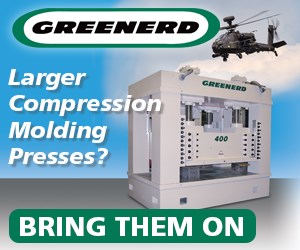Rolls-Royce tests Advanced Low Pressure system (ALPS) for UltraFan engine
Composite elements of the Advanced Low Pressure system (ALPS), including fan blades, a fan case and annulus fillers, were tested together on a donor engine.
Engineers at Rolls-Royce (Derby, U.K.), have successfully tested a key component of the UltraFan engine design. For the first time, all composite elements of the Advanced Low Pressure system (ALPS), including fan blades, a fan case and annulus fillers, were tested together on a donor engine.
The engine parts are manufactured at Rolls-Royce’s Composites Technology Facility, a Composites Centre of Excellence. Each fan blade is made robotically, building up around 500 layers of carbon fiber materials. Heat and pressure are then applied, and each blade is finished with a leading titanium edge.
The Advanced Low Pressure System demonstrates Rolls-Royce’s IntelligentEngine vision. Each blade has a digital twin — an identical virtual copy. During testing, data is collected that is fed into the digital twins, allowing engineers to predict how each blade will perform in service.
“These incredible technologies are taking our world-leading fan efficiency to the next level,” syas Ash Owen, Rolls-Royce, chief engineer, Civil Aerospace Demonstrator Programmes, “More than a decade of research and development has brought us to this point and I’m confident that after extreme weather testing in Canada and performance testing in Germany, we can prove ALPS technology even further here in Derby, moving us one step closer to our UltraFan demonstrator.”
The Advanced Low Pressure System program is a partnership between Rolls-Royce, Clean Sky (Brussels, Belgium), Innovate UK (Swindon, U.K.), the Department for Business, Energy and Industrial Strategy (London, U.K.), the Aerospace Technology Institute (Cranfield, Bedfordshire, U.K.), ITP Aero (Zamudio, Spain) and GKN (Redditch, U.K.).
Related Content
-
Otto Aviation launches Phantom 3500 business jet with all-composite airframe from Leonardo
Promising 60% less fuel burn and 90% less emissions using SAF, the super-laminar flow design with windowless fuselage will be built using RTM in Florida facility with certification slated for 2030.
-
Plant tour: Airbus, Illescas, Spain
Airbus’ Illescas facility, featuring highly automated composites processes for the A350 lower wing cover and one-piece Section 19 fuselage barrels, works toward production ramp-ups and next-generation aircraft.
-
Industrializing additive manufacturing in the defense/aerospace sector
GA-ASI demonstrates a path forward for the use of additive technologies for composite tooling, flight-qualified parts.
















